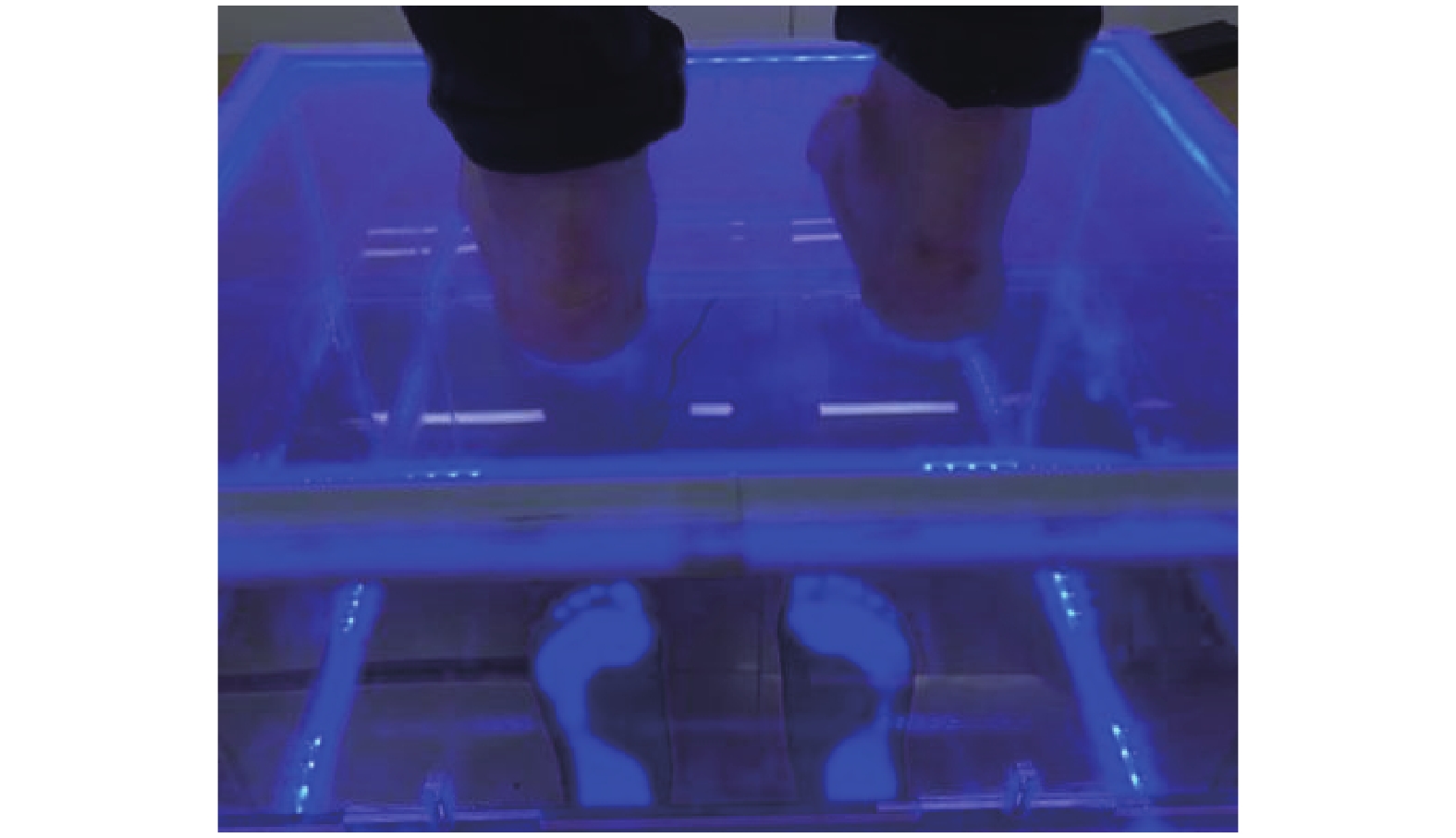Screening Analysis of Flat Foot Disease in School-age Children in Kunming City
-
摘要:
目的 调查昆明市部分小学学龄期儿童(7~13岁)扁平足患病概率和流行病学特征,为预防扁平足提供依据。 方法 利用光学足部评估记录装置在昆明市滇池度假区二小学、经开区第五小学、果林小学、文笔小学内进行扁平足筛查,分析学龄期儿童扁平足发病率、年龄趋势、男女比例、轻重程度及单双足发病情况。 结果 调查昆明市4 444名学龄期儿童(7~13岁)扁平足的整体发生率为29.1%,不同年龄学龄期儿童扁平足的发生率,差异有统计学意义(χ2 = 159.887,P < 0.001),7岁患病率为36.91%,13岁患病率为29%。男生扁平足发生率为62.49%,女生扁平足发生率为37.51%,男女生之间扁平足发生率差异具有统计学意义( χ2 = 63.886,P < 0.001),各年龄段男生扁平足患病率高于女生。学龄期儿童扁平足总发病率按程度分为轻度21.79%、中度 52.43%、重度25.78%,扁平足发病双足型为89.1%,单足左右型差异无统计学意义( P > 0.05)。 结论 7~13岁的学龄期儿童的扁平足患病率随着年龄增长降低,女生扁平足患病率低于男生,多数儿童扁平足发病为中度扁平足。对于学龄期儿童的扁平足应该做到早预防、早发现、早治疗。 Abstract:Objective To investigate the incidence probability and epidemiological characteristics of flat foot in school-age children (7~13 years old) in Kunming, and to provide the evidence for the prevention of flat foot. Methods The incidence of flat foot, age trend, male to female ratio, severity and the incidence of single and double foot of school-age children were analyzed by using the optical foot assessment recording device in the second primary school of Dianchi Resort, the fifth Primary School of Jingkai District, Guolin Primary School and Wenbi Primary School in Kunming. Results The overall incidence of flat foot in 4444 school-age children (7-13 years old) in Kunming was 29.1%. The incidence of flat foot in school-age children of different ages was statistically significant (χ2 = 159.887, P < 0.001). The prevalence was 36.91% at age 7 and 29% at age 13. The incidence of flat feet was 62.49% in boys and 37.51% in girls. There was a statistically significant difference in the incidence of flat feet between boys and girls ( χ2 = 63.886, P < 0.001). The prevalence of flat feet in boys of all ages was higher than that in girls.The total incidence of flat foot in school-age children was divided into mild 21.79%, moderate 52.43% and severe 25.78% according to degree. The incidence of flat foot was 89.1% in bipedal type, and there was no statistical significance in the left and right type of flat foot ( P > 0.05). Conclusion The incidence of flat foot in school-age children aged 7-13 years decreases gradually with the increase of age. The incidence of flat foot in girls is lower than that in boys, and the incidence of flat foot in most children is moderate flat foot. For school-age children, flat feet should be prevented, detected and treated as early as possible. -
Key words:
- Flat foot screening /
- Prevalence /
- School-age children /
- Epidemiological study
-
表 1 不同年龄及性别扁平足发病率比较、扁平足轻重程度及单双足情况比较[n(%)]
Table 1. Comparison of the incidence of flat foot,the severity of flat foot and the condition of single foot in different ages and genders [n(%)]
年龄(岁) 7 8 9 10 11 12 13 男 受检人数(n) 449 381 453 359 310 242 168 轻 21(4.68) 9(2.36) 33(7.28) 20(5.57) 52(16.77) 15(6.20) 4(2.38) 中 106(23.61) 97(25.46) 78(17.22) 44(12.26) 20(6.4) 19(7.85) 14(8.33) 重 70(15.59) 48(12.60) 36(7.95) 35(9.75) 4(1.29) 7(2.89) 3(1.79) 单只 9(2.00) 19(4.99) 10(2.21) 14(3.90) 14(4.52) 5(2.07) 2(1.19) 所有扁平足 206(45.88) 173(45.41) 157(34.66) 113(31.48) 90(29.03) 46(19.01) 23(13.69) 女 受检人数(n) 418 386 376 326 241 225 110 轻 14(3.35) 5(1.30) 13(3.16) 11(3.37) 47(19.50) 7(3.11) 0(0) 中 58(13.88) 89(23.06) 33(8.78) 25(7.67) 4(1.66) 12(5.33) 5(4.55) 重 27(6.46) 28(7.25) 17(4.52) 20(6.13) 2(0.83) 0(0) 0(0) 单只 15(3.59) 5(1.30) 19(5.05) 15(4.60) 10(4.15) 3(1.33) 1(0.91) 所有扁平足 114(27.27) 127(32.90) 82(21.81) 71(21.78) 63(26.14) 22(9.78) 6(5.45) 合计 受检人数(n) 867 767 829 685 551 467 278 轻 35(4.04) 14(1.83) 46(5.55) 31(4.53) 99(17.97) 22(4.71) 4(1.44) 中 164(18.92) 186(24.25) 111(13.39) 69(10.07) 24(4.36) 31(6.64) 19(6.83) 重 97(11.19) 76(9.91) 53(6.39) 55(8.03) 6(1.09) 7(1.50) 3(1.08) 单只 24(2.7) 24(3.13) 29(3.50) 29(4.23) 24(4.36) 8(1.71) 3(1.08) 所有扁平足 320(36.91) 300(39.11) 239(28.83) 184(26.86) 153(27.77) 68(14.56) 29(10.43) -
[1] 包贝西,张建中. 扁平足足印的测量与临床研究现状[J]. 中国矫形外科杂志,2012,20(1):56-58. [2] 包贝西,张建中. 足印角及C-S指数与扁平足的相关性研究[J]. 中国骨与关节杂志,2017,6(6):439-444. doi: 10.3969/j.issn.2095-252X.2017.06.008 [3] 宋艳,郑坤,魏浩馨,等. 足姿指数评估扁平足信度及在3D打印鞋垫中的应用[J]. 中国组织工程研究,2022,26(3):344-349. [4] 陈盼盼,刘夕东,韩林林,等. 学龄儿童柔软性扁平足足底压力分布特征[J]. 中国康复,2021,36(4):226-230. [5] 熊怒, 王旭, 黄加张, 等. 儿童柔韧性扁平足的矫形鞋垫治疗研究进展[J/OL]. 中国矫形外科杂志, 2022, 30(7): 630-634. [6] 钟雨婷,吕婧仪,陈天午,等. 上海市学龄儿童足弓指数及扁平足的流行病学研究[J]. 中国学校卫生,2020,41(9):1358-1361,1364. [7] 周湘莹,曾庆,廖政文,等. 定制型矫形鞋垫在扁平足治疗中的应用[J]. 中国组织工程研究,2022,26(28):4587-4592. doi: 10.12307/2022.318 [8] Almutairi A F,BaniMustafa A,Bin Saidan T,et al. The prevalence and factors associated with low back pain among people with flat feet[J]. Int J Gen Med,2021,14(1):3677-3685. [9] 郑德斌,赵义红,晏诗阳,等. 足弓发育期扁平足儿童的足底压力跟踪研究[J]. 皮革科学与工程,2021,31(3):61-65,82. [10] 金宗学. 矫形鞋垫和运动干预对9-10岁男童扁平足矫正效果及其机制[D]. 北京: 北京体育大学博士论文, 2018. [11] 翟俊娜,邵丽娜. 扁平足诊疗评估方法总结及某高校女生扁平足发病率调查[J]. 按摩与康复医学,2022,13(14):56-58. doi: 10.19787/j.issn.1008-1879.2022.14.018 [12] 梁燕清,李玉红,陈瑞巧. 广州市海珠区600名4~6岁儿童扁平足发生情况观察及分析[J]. 中国实用医药,2014,9(10):266-267. [13] 张佳佳,陈浩月,王鑫. 足内在肌增强训练对扁平足的影响[J]. 按摩与康复医学,2022,13(5):53-56,60. doi: 10.19787/j.issn.1008-1879.2022.05.016 [14] 杨言通, 田丽, 孙长丽. 大学生足部卫生状况及其影响因素分析[ J ] . 中国学校卫生, 2010, 31 ( 9 ) : 1 099-1100. [15] Pfeiffer M. Prevalence of flat foot in preschool-aged children[J]. Pediatrics,2016,118(2):634-639. [16] 叶春娟,陈玉平. 幼儿足弓发育及异常状况文献综述[J]. 当代体育科技,2019,9(15):53-54. [17] Kim E K,Kim J S. The effects of short foot exercises and arch support insoles on improvement in the medial longitudinal arch and dynamic balance of flexible flatfoot patients[J]. J Phys Ther Sci,2016,28(1):3136-3139. [18] Hrysomallis C. Relationship between balance ability,training and sports injury risk[J]. Sports Med,2007,37(6):547-551. doi: 10.2165/00007256-200737060-00007 -






 下载:
下载:



